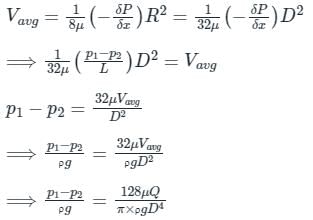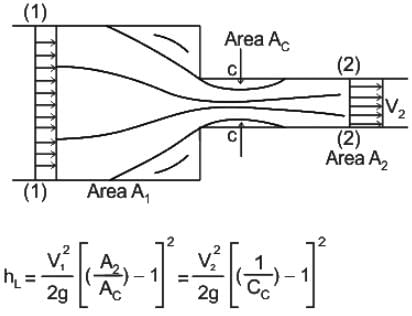Civil Engineering (CE) Exam > Civil Engineering (CE) Tests > Test: Types of Minor Losses in Pipe - Civil Engineering (CE) MCQ
Test: Types of Minor Losses in Pipe - Civil Engineering (CE) MCQ
Test Description
10 Questions MCQ Test - Test: Types of Minor Losses in Pipe
Test: Types of Minor Losses in Pipe for Civil Engineering (CE) 2025 is part of Civil Engineering (CE) preparation. The Test: Types of Minor Losses in Pipe questions and answers have been prepared
according to the Civil Engineering (CE) exam syllabus.The Test: Types of Minor Losses in Pipe MCQs are made for Civil Engineering (CE) 2025 Exam.
Find important definitions, questions, notes, meanings, examples, exercises, MCQs and online tests for Test: Types of Minor Losses in Pipe below.
Solutions of Test: Types of Minor Losses in Pipe questions in English are available as part of our course for Civil Engineering (CE) & Test: Types of Minor Losses in Pipe solutions in
Hindi for Civil Engineering (CE) course.
Download more important topics, notes, lectures and mock test series for Civil Engineering (CE) Exam by signing up for free. Attempt Test: Types of Minor Losses in Pipe | 10 questions in 30 minutes | Mock test for Civil Engineering (CE) preparation | Free important questions MCQ to study for Civil Engineering (CE) Exam | Download free PDF with solutions
Test: Types of Minor Losses in Pipe - Question 1
Water is pumped through a pipeline to a height of 10 m at the rate of 0.1 m3 /s, friction and other minor losses are 5 m. pumping power required in kW is
Detailed Solution for Test: Types of Minor Losses in Pipe - Question 1
Test: Types of Minor Losses in Pipe - Question 2
For a circular pipe with diameter D and having laminar flow, the head loss due to friction is ________.
Detailed Solution for Test: Types of Minor Losses in Pipe - Question 2
Test: Types of Minor Losses in Pipe - Question 3
Loss of head at the exit of a pipe is given as ________.
Detailed Solution for Test: Types of Minor Losses in Pipe - Question 3
Detailed Solution for Test: Types of Minor Losses in Pipe - Question 4
Test: Types of Minor Losses in Pipe - Question 5
Which of the following is not a minor energy loss?
Detailed Solution for Test: Types of Minor Losses in Pipe - Question 5
Detailed Solution for Test: Types of Minor Losses in Pipe - Question 6
Test: Types of Minor Losses in Pipe - Question 7
Assertion A: Loss of head at a sudden expansion of a pipe is larger than that at a sudden contraction.
Reason R: Separation of flow occurs at sudden contractionsWhich of the following is correct?
Detailed Solution for Test: Types of Minor Losses in Pipe - Question 7
Detailed Solution for Test: Types of Minor Losses in Pipe - Question 8
Test: Types of Minor Losses in Pipe - Question 9
The frictional resistance for fluids in motion is
Detailed Solution for Test: Types of Minor Losses in Pipe - Question 9
Test: Types of Minor Losses in Pipe - Question 10
The frictional resistance for fluids in motion is
Detailed Solution for Test: Types of Minor Losses in Pipe - Question 10
Information about Test: Types of Minor Losses in Pipe Page
In this test you can find the Exam questions for Test: Types of Minor Losses in Pipe solved & explained in the simplest way possible.
Besides giving Questions and answers for Test: Types of Minor Losses in Pipe, EduRev gives you an ample number of Online tests for practice
Download as PDF




























